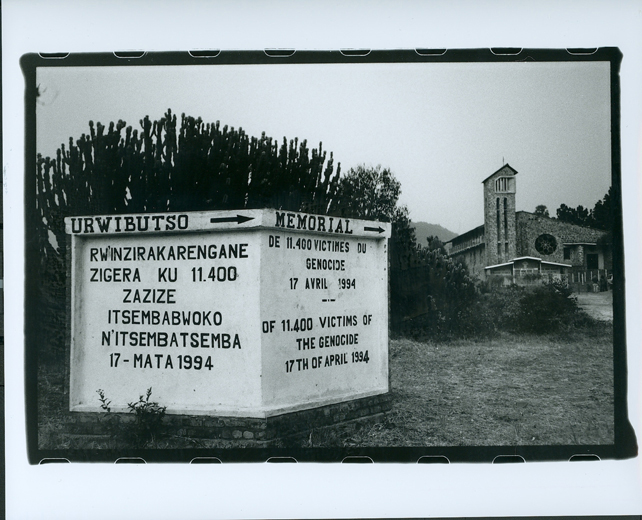
|
The St Peters and St Jean sites are located in Western Province. Click on the image for a slideshow of photographs. All photographs © 2002-2008 Jens Meierhenrich. |

|
The St Peters and St Jean sites are located in Western Province. Click on the image for a slideshow of photographs. All photographs © 2002-2008 Jens Meierhenrich. |
When genocide erupted in Rwanda the evening of April 6, 1994, crowds of anxious men, women, and children—ethnic Tutsi—converged on this Catholic church complex in the western town of Kibuye under the false impression that it offered protection. Some of them even came by boat, since St. Peters and related buildings sit atop a peninsula overlooking Lake Kivu, a sizable body of water.
A subsequent siege turned into a massive slaughter on April 17 when the local political leader, Clement Kayishema, exhorted members of the Gendarmerie Nationale, communal police, and Interahamwe militia, reinforced by armed civilians, to attack the refugees with guns, grenades, machetes, spears, cudgels, and other weapons—gravely injuring and killing thousands assembled here as well as those Tutsis hiding on the nearby hills. Before murdering their would-be victims, attackers crippled some of them by first slashing their Achilles‘ tendons to prevent them from fleeing, facts which emerged later from excavations and analysis at St. Peters and St. Jean Complex.
Today outside the church, a gated memorial the size of a small cemetery honors the interred remains of approximately 11,400 people, their anonymous mass graves shielded by metal slabs. Visitors cannot but notice the some dozen skulls staring out from behind glass windows over the grounds, under an inscription reading in Kinyarwanda, the language of Rwanda, “Memorial for innocent victims of ethnic cleansing and massacres.” A local priest who guided us here, when asked for his thoughts about the memorial and its role in the community, reflected sadly for a moment and answered, “Since it is well taken of, perhaps it helps certain people feel guilty in their hearts. ”
Copyright © 2010 Jens Meierhenrich. All rights reserved.